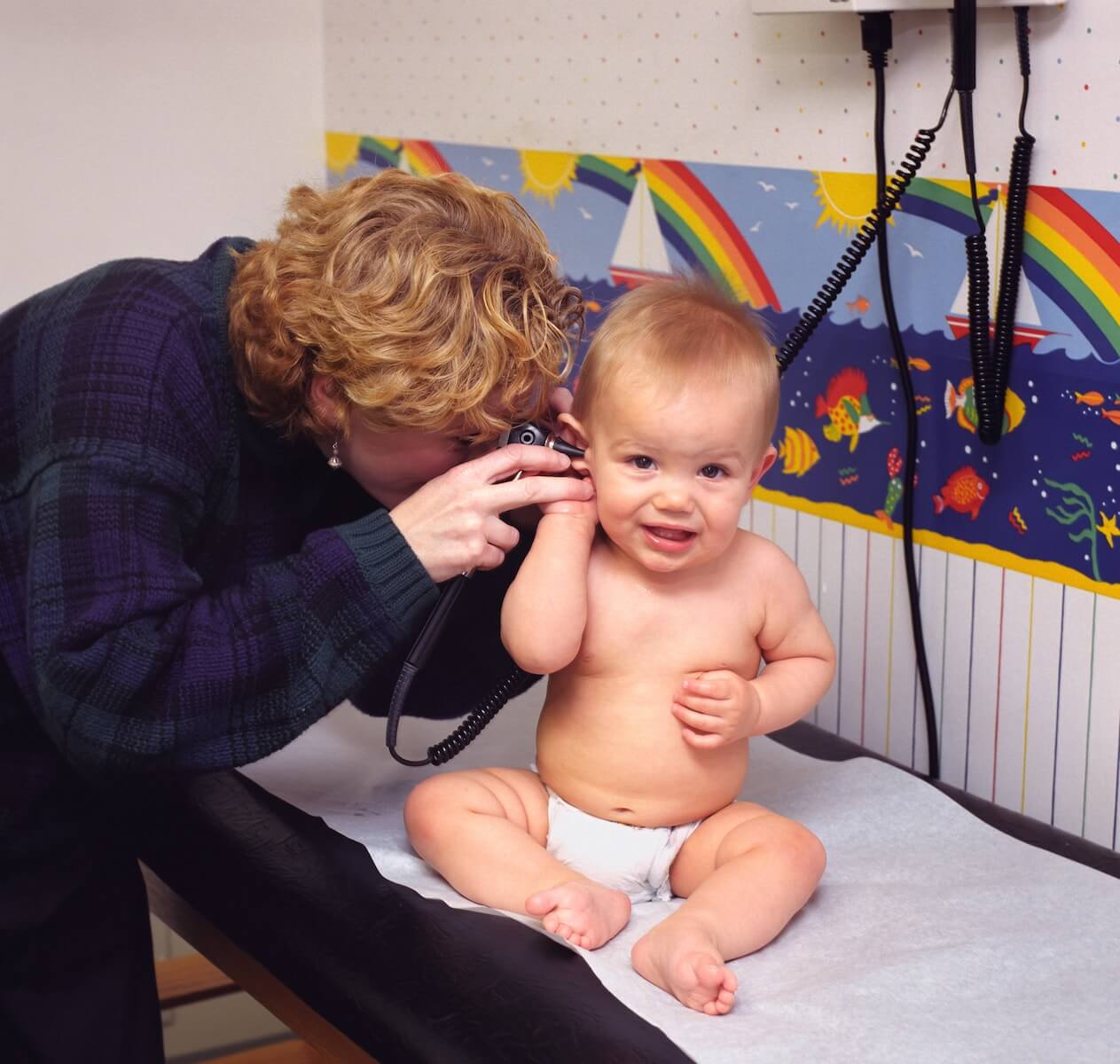🔑 Key Findings:
- Each ear infection can lead to fluid building behind the eardrum
- Children with several ear infections before age 3 had smaller vocabularies
- These children also had trouble detecting changes in sounds
GAINESVILLE, Fla. — Ear infections, while quite common in children, are largely considered little more than nuisances that clear up within a matter of days or weeks by parents and doctors alike. Now, however, new research suggests all caregivers should take these infections seriously. Scientists at the University of Florida have found that chronic ear infections during childhood may eventually lead to delays in language development.
Study authors explain that each and every ear infection can potentially impair hearing with fluid building up behind the eardrum. Over time, if ear infections become frequent in a child, this repeated, temporary hearing loss may promote deficits in auditory processing and language development years down the line.
“Ear infections are so common that we tend to dismiss them as having no long-term effect. We should take all ear infections seriously,” says Susan Nittrouer, lead researcher and a UF professor of speech, language, and hearing sciences in the College of Public Health and Health Professions, in a media release. “Parents should be aware that their child may have some middle ear fluid without it being painful and work with their doctor to monitor their child closely.”
Nittrouer and Joanna Lowenstein, a researcher in the UF Health Clinical and Translational Science Institute, conducted this research by studying the auditory processing and language development of 117 children (ages 5 to 10 years-old) – both with and without a history of chronic ear infections during early childhood.
On average, kids who recovered from several ear infections before turning three years of age had smaller vocabularies and found it more difficult to match similar sounding words than children with few or no ear infections. Those same children also exhibited difficulty detecting changes in sounds, which may be a sign of problems in their brain’s auditory processing centers.
Another takeaway, Nittrouer adds, is for parents, physicians, and speech pathologists to continue monitoring children long after the last preschool earache is gone. Certain language deficits may reveal themselves at a later age.
“As children go through school, the language they’re required to use becomes more complex,” Nittrouer notes.

The research team made use of three tests to analyze children’s’ language development and auditory processing levels. During one test, the kids had to choose which of three cartoon characters sounded different than the other two.
“The better you can recognize this change in amplitude across time, the better you’re going to be able to recognize the structure of speech,” Nittrouer adds.
The second task asked kids to name pictures presented to them. This was intended to measure their vocabulary size. Then, kids had to match up words based on whether they began or ended with the same speech sound – a capacity that is essential not only to speech development but also reading acquisition.
Treating ear infections as early as possible can go a long way toward stopping the buildup of fluids, researchers explain. If a child’s ear infections become too frequent and fluid does build up, tubes placed temporarily in the eardrum can help drain fluid and restore hearing. This should lower the risk of a delay in the development of the central auditory pathways, and consequently, fewer issues acquiring language.
The study is published in the International Journal of Pediatric Otorhinolaryngology.

The behavior links to a personality trait/tendency that also happens to align with other propensities. Article makes it sound like one causes the other.